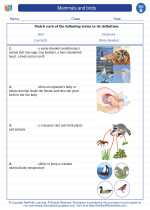Jurassic Period
The Jurassic Period is the second period of the Mesozoic Era and it lasted from approximately 201 to 145 million years ago. It was a time of significant evolutionary developments and the diversification of many groups of organisms.
Geography and Climate
During the Jurassic Period, the Earth's landmasses were still connected as the supercontinent Pangaea, although it began to break apart during this time. The climate was generally warm and tropical, with high levels of atmospheric carbon dioxide contributing to the warmth.
Flora and Fauna
The Jurassic Period saw the dominance of dinosaurs, including well-known species such as the Brachiosaurus, Stegosaurus, and Allosaurus. The first birds and mammals also appeared during this time. The plant life was dominated by conifers, ferns, and cycads, and the first flowering plants began to emerge towards the end of the Jurassic.
Study Guide
- What is the Jurassic Period?
- When did the Jurassic Period occur?
- What was the climate like during the Jurassic Period?
- Which supercontinent was present during the Jurassic Period?
- What were the dominant types of plant life during the Jurassic Period?
- Which types of animals dominated the Jurassic Period?
Answers
- The Jurassic Period is the second period of the Mesozoic Era and a time of significant evolutionary developments.
- The Jurassic Period lasted from approximately 201 to 145 million years ago.
- The climate during the Jurassic Period was generally warm and tropical, with high levels of atmospheric carbon dioxide contributing to the warmth.
- The supercontinent Pangaea was present during the Jurassic Period.
- The dominant types of plant life during the Jurassic Period were conifers, ferns, and cycads, with the emergence of flowering plants towards the end of the period.
- The Jurassic Period was dominated by dinosaurs, including species such as the Brachiosaurus, Stegosaurus, and Allosaurus. The first birds and mammals also appeared during this time.
[Jurassic] Related Worksheets and Study Guides:
.◂Science Worksheets and Study Guides Second Grade. Mammals and birds
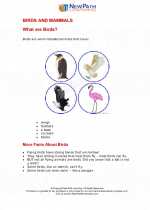
 Activity Lesson
Activity Lesson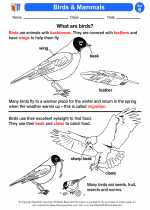
 Worksheet/Answer key
Worksheet/Answer key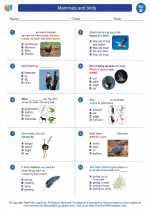
 Worksheet/Answer key
Worksheet/Answer key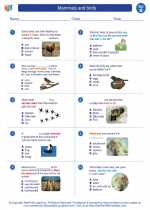
 Worksheet/Answer key
Worksheet/Answer key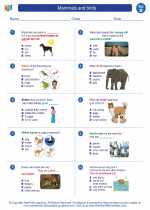
 Worksheet/Answer key
Worksheet/Answer key
 Vocabulary/Answer key
Vocabulary/Answer key